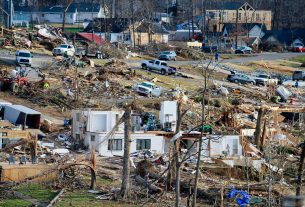
September 2023 marked the release of the thematic assessment of invasive alien species by the Intergovernmental Science Policy Platform on Biodiversity and Ecosystem Services (IPBES). This landmark assessment, conducted by over 80 experts representing more than 40 countries, comprehensively and critically evaluates evidence for biological invasions and impacts of invasive alien species.
Biological invasions refer to species that have been introduced deliberately or accidentally by humans outside of their natural ranges where they establish self-sustaining populations and spread. There are over 37,000 alien species in the world today, with numbers growing year on year. Invasive alien species are the portion of alien species that negatively impact biodiversity, local ecosystems and other species, with one sixth of them negatively impacting nature’s contribution to people (IPBES 2023). Invasive alien species are considered among the top five threats to biodiversity. They impede food security, water security, human health and they cost the world economy over $423 billion in 2019 alone (IPBES 2023).
The invasive species IPBES assessment is comprehensive in its approach, covering the current status of invasions, their past and future trends, drivers, impacts, and past and future management and governance approaches. It also considers how invasions can be influenced by indirect drivers, including demographic, economic, sociocultural, and technological factors, as well as natural drivers of change, like floods, storms and wildfires, and by biodiversity loss itself. While noting that it is likely an underestimate, the assessment finds that there are 1,061 plants known to be invasive globally, which accounts for 6% of established alien plants (IPBES 2023).
In this virtual issue, we draw 22 examples from the Biological Flora, a series of autecological plant accounts that are published in Journal of Ecology alongside the journal’s other articles. Over 300 accounts have been published to date. Most of these feature plants found in Britain and Ireland reflecting the Flora’s history, though the Biological Flora has recently been expanded to include international flora. This selection of 22 species includes alien species introduced in Europe that have become invasive (e.g. Ambrosia artemisiifolia, Crassula helmsii, Gunnera tinctoria, Heracleum mantegazzianum, Impatiens glandulifera, Reynoutria japonica, Rhododendron ponticum, Robinia pseudoacacia, Rosa rugosa, and Quercus rubra), species native to Europe that have become invasive alien species in other parts of the world (e.g. Chamaenerion angustifolium, Cirsium vulgare, Dactylis glomerata, Hedera helix, Holcus lanatus, Hypochaeris radicata, Phragmites australis Spartina anglica and Trifolium repens), and species impacted by invasive species (e.g. Fraxinus excelsior, Spartina maritima and Ulmus glabra). These examples show the complexity and multifaceted nature of invasions, where species can provide numerous ecological values and services in their native ranges but have negative impacts when introduced elsewhere.
Read the Virtual Issue here: Invasive Biological Flora
For a complete list of the Biological Flora, please see the database. We welcome submissions to both the Biological Flora of Britain and Ireland (BFBI) or the International Biological Flora (IBF). Prospective authors are invited to contact the Editor, Anthony Davy at [email protected]

